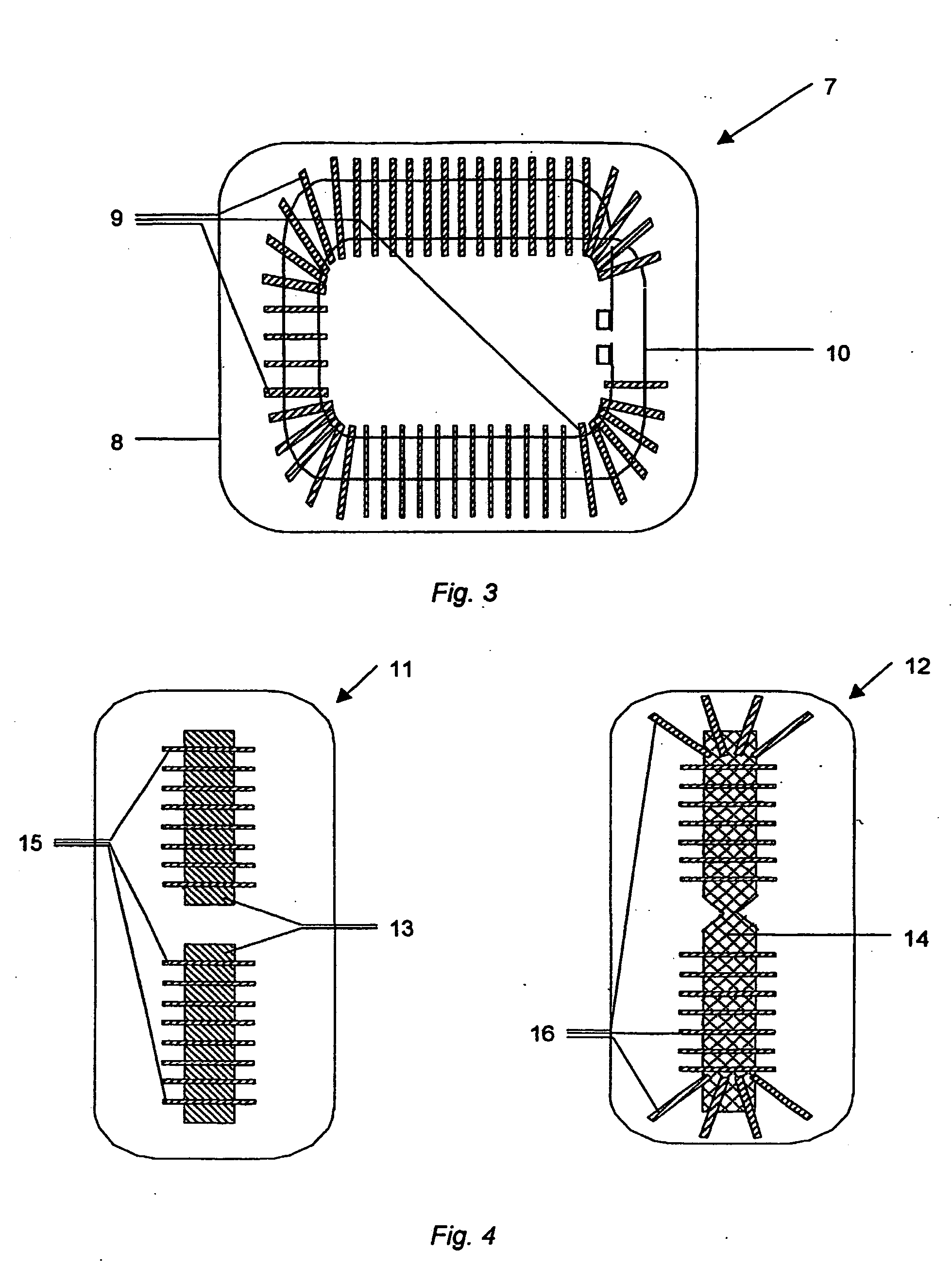Device for shielding a transponder, method for producing a corresponding shielding and transponder provided with said shielding
- Summary
- Abstract
- Description
- Claims
- Application Information
AI Technical Summary
Benefits of technology
Problems solved by technology
Method used
Image
Examples
Embodiment Construction
[0043] The illustrative embodiments of the present invention will be described with reference to the figure drawings, wherein like elements and structures are indicated with like reference numbers.
[0044]FIG. 1 shows a unit 1 for shielding a transponder, which comprises at least a chip and an antenna structure 4 with application-specific spatial dimensions and which is secured to an electrically conductive surface, according to a first aspect of the present invention. The antenna structure 4 shown in FIG. 1 represents a conductor loop and an antenna coil, respectively.
[0045] The unit 1 comprises a substrate 2 having formed thereon a plurality of fixed ferromagnetic particles 3 in an area having at least the spatial dimensions of the antenna structure 4 of the transponder.
[0046] The antenna structure 4 of the transponder is shown in FIG. 1 only for clearly indicating this area on the substrate 2, said antenna structure 4 being, however, not visible when the shielding itself is bein...
PUM
 Login to View More
Login to View More Abstract
Description
Claims
Application Information
 Login to View More
Login to View More - R&D
- Intellectual Property
- Life Sciences
- Materials
- Tech Scout
- Unparalleled Data Quality
- Higher Quality Content
- 60% Fewer Hallucinations
Browse by: Latest US Patents, China's latest patents, Technical Efficacy Thesaurus, Application Domain, Technology Topic, Popular Technical Reports.
© 2025 PatSnap. All rights reserved.Legal|Privacy policy|Modern Slavery Act Transparency Statement|Sitemap|About US| Contact US: help@patsnap.com



